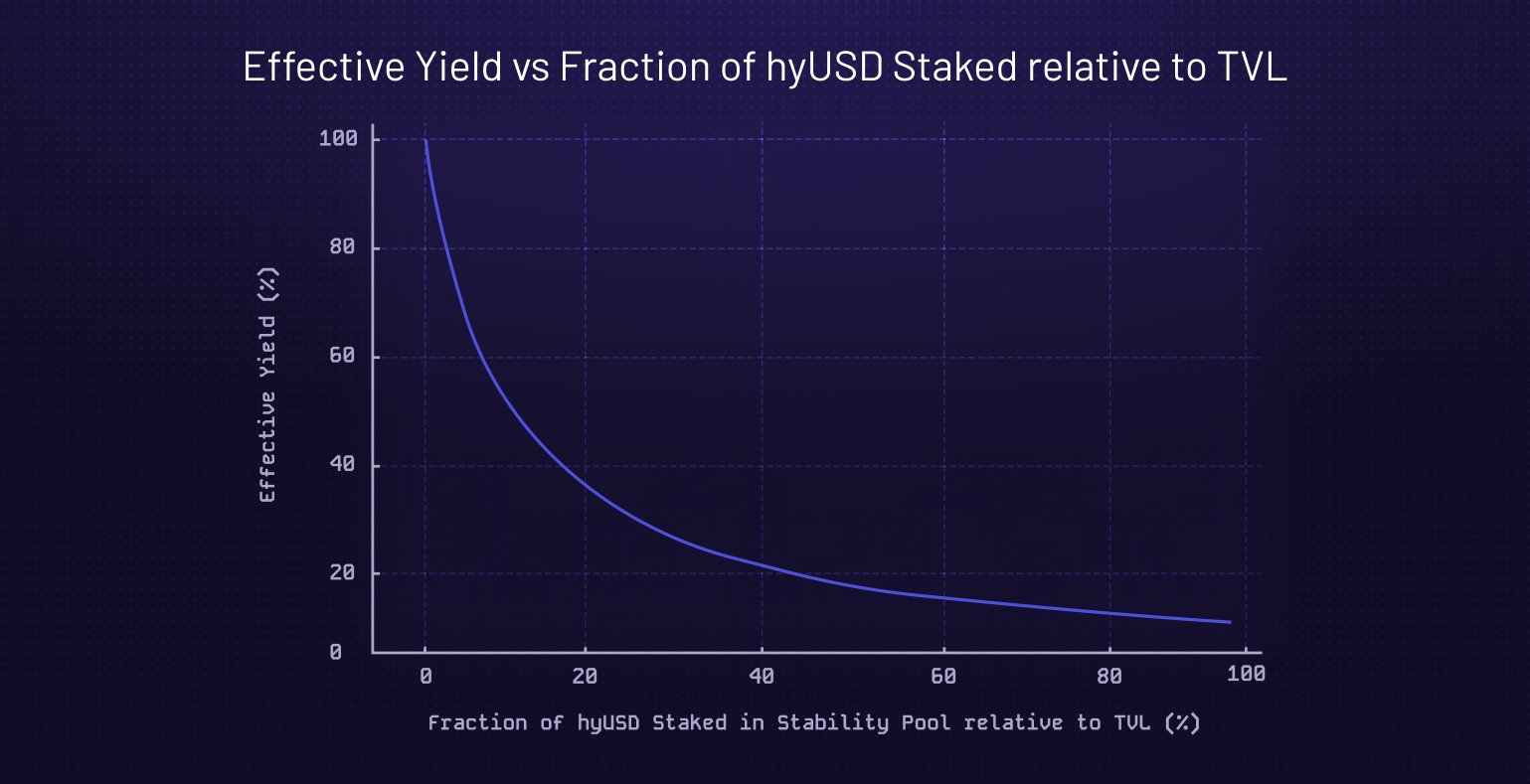Introducing Staked hyUSD
Staked hyUSD is a tokenized, yield-bearing version of hyUSD that represents a user’s deposit in the Stability Pool. It’s designed to maximize returns from Hylo’s underlying assets (LSTs) through an effortless user experience. When users deposit hyUSD into Hylo’s Stability Pool, they receive Staked hyUSD tokens representing their pro rata share of the pool. These tokens automatically compound yield at the end of each network epoch—no lockups, no additional actions required. Users benefit from:- Full liquidity
- Composability with other DeFi protocols
- Seamless, built-in yield
- Direct wallet accessibility
Yield Generation
Every epoch, LST yields generated by Hylo’s collateral are “harvested” as newly minted hyUSD and automatically compounded into the stability pool. This mechanism causes the Staked hyUSD to continuously appreciate in value.Stability Pool APY
Yields for the stability pool are generally multiple times higher than the 7-10% base rate generated by LSTs. The minimum rate when the protocol is healthily collateralized is 15% and can go as high as 30%. Staked hyUSD holders collect rewards from the entirety of Hylo’s TVL, because xSOL and unstaked hyUSD holders do not benefit from the yield on their respective collateral by design. As such, the yields generated by the protocol are shared only among those who stake hyUSD, which is a relatively smaller group. The below chart reflects the “effective yield” on hyUSD compared to what percent of its supply is staked.
Example: How the Stability Pool Boosts Yields
Example: How the Stability Pool Boosts Yields
This example demonstrates how the Stability Pool offers significantly higher yields compared to basic SOL staking. However, it’s important to note that actual yields may fluctuate based on several key factors, including the amount of hyUSD staked, the total collateral in Hylo, and base LST yield.
- Initial Setup
- SOL Reserves: $10 million
- xSOL market cap: $5 million
- hyUSD market cap: $5 million
- Staked hyUSD in Stability Pool: 40%, which equals $2 million
- Base LST Yield: 8% per year, generating $800,000 annually from the $10 million SOL
- Reward Distribution All $800,000 in rewards are given to the $2 million hyUSD staked in the Stability Pool.
- Effective Yield = Total Rewards / Amount Staked
- Calculation: $800,000 / $2,000,000 = 40% yield